From Light to Food – Organization of Photosynthetic Complexes
MacGregor-Chatwin et al. map the cellular organization of photosynthetic protein complexes http://www.plantcell.org/content/29/5/1119
Life on Earth depends on photosynthesis, the source of all of our food, oxygen, and most of our energy. Two pigment-protein complexes called Photosystems I and II drive photosynthesis. These chlorophyll-protein complexes are housed in the membranes of cyanobacteria, algae, and plants. The two photosystems convert solar energy and water into chemical energy for making carbohydrates and other cell materials from carbon dioxide. The distribution and organization of the photosystems, for example which proteins they sit next to in the membrane, are critical for solar energy capture and conversion. Photosystem I is the dominant photosynthetic complex in cyanobacteria, and we know its detailed structure and how it works. However, prior to this work, we did not know where this photosystem sits in the photosynthetic membrane, or precisely where the photosystem-containing membranes lie within the cell.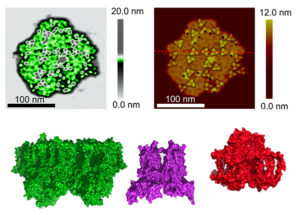
MacGregor-Chatwin et al. set out to discover the location of Photosystem I in several types of cyanobacterium, using atomic force microscopy of isolated membranes and high resolution fluorescence microscopy of whole cells. These two advanced microscopy techniques are highly complementary as they detect different features. Atomic force microscopy is a super-high resolution imaging tool that allows the distribution and orientation of individual complexes to be visualized. High resolution fluorescence microscopy reveals the pigments within the membrane domains and so the identity of the complexes. Thus the authors were able to construct detailed models of the orientation of these pigment-protein complexes inside membranes and cells.
They found that Photosystem I complexes form extensive, ordered assemblies in some regions of the photosynthetic membrane in several different cyanobacteria species. They built a structural model of one such region containing 96 Photosystem I complexes and 27,648 chlorophyll molecules, and showed how harvested solar energy moves between the photosystem complexes.
The authors also found that Photosystem I likely sits next to Photosystem II complexes in other parts of the membrane. Here, contact zones between the two photosystems provide sites for docking large protein structures called phycobilisomes, which contain many pigments for absorbing light. The phycobilisomes sit on the membrane and feed harvested energy to both Photosystems I and II.
The aim of understanding photosynthesis requires that we know the structures, amounts, and cellular locations of the machinery that harvests and stores solar energy. The future challenge is to map the distribution and organization of all major photosynthetic complexes within the photosynthetic membrane.
MacGregor-Chatwin,C., Sener, M., Barnett, S.F.H., Hitchcock, A., Barnhart-Dailey, M.C., Maghlaoui. K., Barber, J., Timlin, J.A., Schulten, K., and Hunter, C.N. (2017). Lateral segregation of photosystem I in cyanobacterial thylakoids. Plant Cell 10.1105/tpc.17.00071.


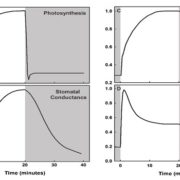
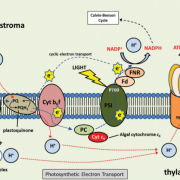

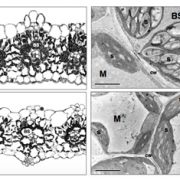
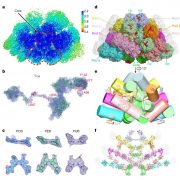
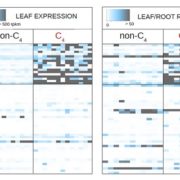
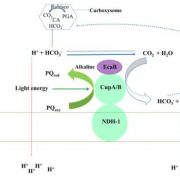
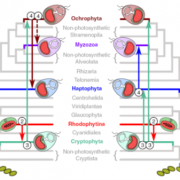


Leave a Reply
Want to join the discussion?Feel free to contribute!